Top 60+ Agile Testing Interview Questions And Answers (2025)
Preparing for an Agile testing interview? You’re in the right place! Agile testing plays a crucial role in ensuring software quality in Agile environments. To help you succeed, we’ve compiled a list of essential Agile Testing Interview Questions & Answers. Whether you’re a fresher or an experienced professional, these questions will help you understand Agile testing concepts, showcase your skills, and ace your next interview confidently.
Agile Testing Interview Questions for Freshers
Here is the list of 60+ Top Agile Testing interview questions and answers.
1. What is Agile Testing?
Agile testing is a software testing practice that follows the principles of Agile software development. Agile testing is conducted iteratively and incrementally which is different from traditional software development methodologies. This testing approach is integrated throughout the development lifecycle rather than being a separate phase. Agile testers work closely with developers, product managers, and other stakeholders, ensuring that the product meets customer needs and quality standards at each stage. By promoting frequent feedback and adapting to changes swiftly, Agile testing helps deliver robust, user-centered products more efficiently.
2. Explain the Agile Testing life cycle?
The Agile Testing Life Cycle is an iterative process that ensures continuous testing and quality assurance. It consists of 5 phases:
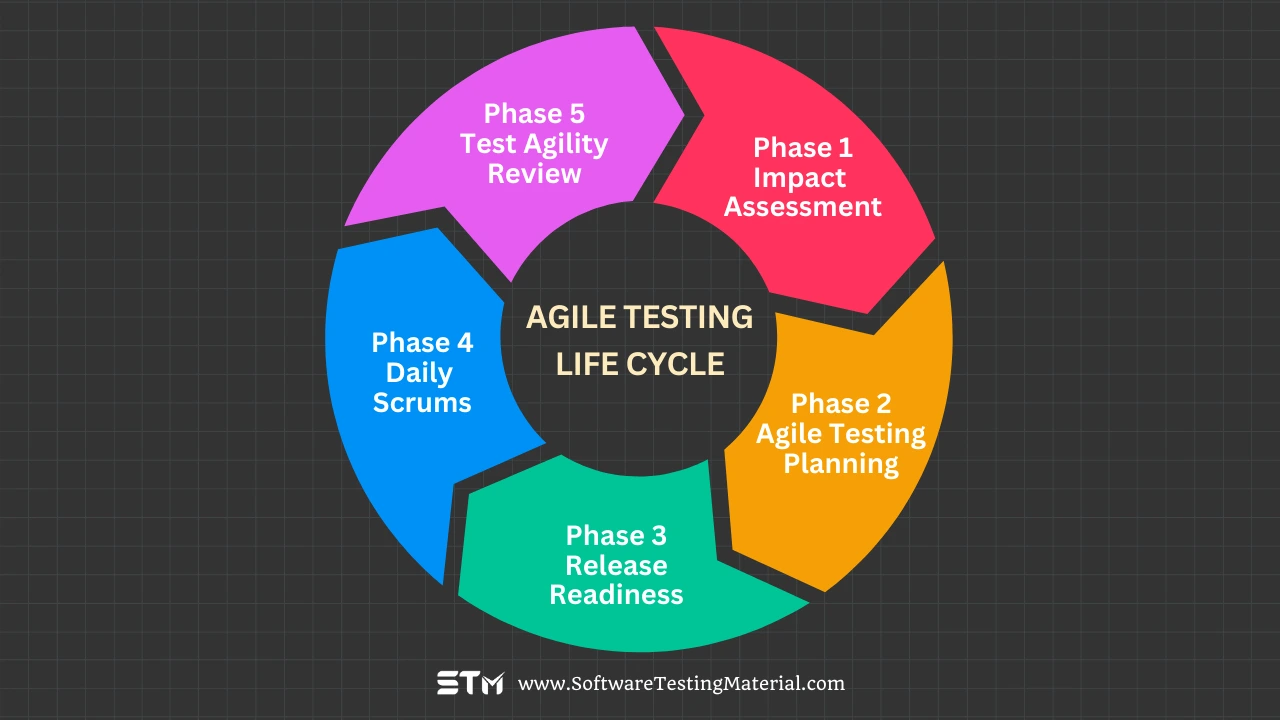
Phase 1: Impact Assessment
In this initial phase, the team assesses the potential impacts of new features or changes. It involves identifying the requirements and objectives, understanding stakeholder needs, and evaluating any risks associated with them. This phase sets the foundation for effective test planning and prioritization.
Phase 2: Agile Testing Planning
During the Agile Testing Planning phase, the test strategy is defined. This includes selecting the appropriate testing frameworks, tools, and methodologies. The team prepares test cases or scripts and determines the resources and schedule necessary for addressing the identified impacts. Collaboration with all stakeholders, including developers and business analysts, is essential in planning effective tests.
Phase 3: Release Readiness
As development progresses, the focus shifts to ensuring that the product is ready for release. This phase involves extensive testing, such as functional, integration, and regression testing, to validate the functionality and performance of the product. Any issues discovered are addressed promptly to maintain the development timeline.
Phase 4: Daily Scrums
Daily scrums are short, time-boxed meetings where the team discusses progress, challenges, and plans for the day. In terms of testing, these meetings ensure testers are aware of the latest changes, receive feedback, and collaborate effectively to address any emerging issues. Agile testing thrives on continuous communication and adaptation as facilitated by these daily interactions.
Phase 5: Testing Agile Review
Following the completion of the testing cycle, an Agile testing review is conducted. The testing team, along with other stakeholders, evaluates the overall testing process, reviewing the effectiveness of tests and identifying any areas for improvement. This feedback loop helps refine future testing cycles and contributes to the continuous improvement of the Agile workflow.
3. What is Agile Manifesto?
Agile manifesto defines 4 key points:
- i. Individuals and interactions over process and tools
- ii. Working software over comprehensive documentation
- iii. Customer collaboration over contract negotiation
- iv. Responding to change over following a plan
4. What are the principles of Agile Software Development?
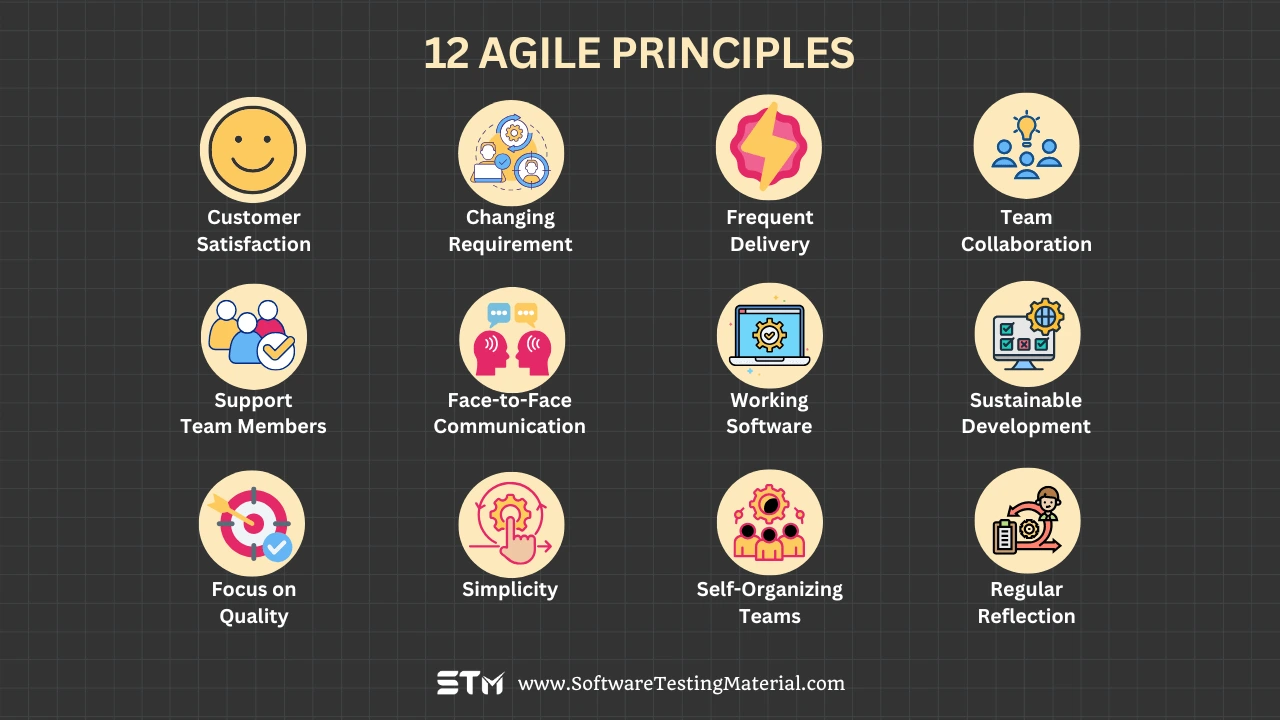
- Customer Satisfaction: Our highest priority is to satisfy the customer by delivering valuable software quickly and continuously.
- Changing Requirement: Be open to changes in requirements, even late in development. Agile embraces change for the customer’s advantage.
- Frequent Delivery: Deliver working software frequently, from a few weeks to a few months, with a preference for shorter cycles.
- Team Collaboration: Business people and developers must work together daily throughout the project.
- Support Team Members: Build projects around motivated individuals. Give them the environment and support they need, and trust them to get the job done.
- Face-to-Face Communication: The most efficient and effective way to convey information is through face-to-face conversation.
- Working Software: A working product is the primary measure of progress.
- Sustainable Development: Agile processes promote a pace that is sustainable for the team over the long term.
- Focus on Quality: Continuous attention to technical excellence and good design enhances agility.
- Simplicity: Maximize the work not done by keeping things simple.
- Self-Organizing Teams: The best designs and solutions emerge from teams that organize themselves.
- Regular Reflection: At regular intervals, the team reflects on how to become more effective and adjusts its behavior accordingly.
5. What are the main roles in Scrum?
Scrum consists of three main roles:
Product Owner: Product Owner usually represents the Client and acts as a point of contact from the Client side. The one who prioritizes the list of Product Backlogs which Scrum Team should finish and release.
Scrum Master: Scrum Master acts as a facilitator to the Scrum Development Team. Clarifies the queries and organizes the team from distractions and teach the team how to use scrum and also concentrates on Return on Investment (ROI). Responsible for managing the sprint.
Scrum Development Team: Developer’s, QA’s. Who develops the product. Scrum development team decides the effort estimation to complete a Product Backlog Item.
Scrum Team: A cross-functional, self-organizing group of dedicated people (Group of Product Owner, Business Analyst, Developer’s and QA’s). Recommended size of a scrum team is 7 plus or minus 2 (i.e, between 5 to 9 members in a team).
6. What are the roles and responsibilities of Agile testers?
- Collaborate with Team Members: Agile testers work closely with developers, product owners, and other stakeholders to ensure a clear understanding of requirements and acceptance criteria.
- Participation from Project Inception: Engage from the early stages of the project to anticipate potential issues and contribute to refining user stories.
- Test Design and Execution: Responsible for designing, executing, and reporting on both manual and automated tests to verify each iteration meets the criteria.
- Defect Identification and Communication: Identify any defects within the product and effectively communicate these issues to facilitate prompt resolution.
- Continuous Feedback: Provide ongoing feedback to improve processes and ensure the delivery of high-value products to the user.
- Adaptation to Agile Processes: Must be flexible and adaptive to the quick changes common in Agile methodologies, often requiring rapid testing and feedback cycles.
- Supporting Continuous Integration: Ensure tests are aligned with continuous integration practices, promoting early and frequent testing to catch issues early.
7. What approach do you follow when requirements change continuously?
In Agile methodology, change in requirement is possible. It’s not like other traditional methodologies where the requirements are locked down at the requirement phase. Every team member should be ready to handle the changes in the project.
The team should work closely with the product owner and other stakeholders to understand the scope of requirement change and to negotiate to keep the requirement changes to a minimum or to adopt those changes in the next sprint. Based on the requirement changes Test Team could update the Test Plan and Test Cases to achieve the deadlines. The team should understand the risk in the requirement change and prepare a contingency plan. It is a best practice not to go for the automation process until requirements are finalized.
8. What are the Agile Quality strategies?
Some Agile quality strategies are-
- Refactoring
- Non-solo development
- Static and dynamic code analysis
- Reviews and Inspection
- Iteration/sprint demos
- All hands demo
- Lightweight milestone reviews
- Short feedback cycles
- Standards and guidelines
9. What qualities should a good Agile tester have?
A good Agile tester should have the following qualities:
- Collaboration Skills: They work well with developers, product owners, and the rest of the team. Communication and teamwork are key.
- Adaptability: Agile environments change quickly, and a good tester must adapt to new requirements or priorities.
- Attention to Detail: They carefully examine the functionality to find and fix issues before they become problems.
- Proactive Approach: A good tester doesn’t wait for tasks; they take initiative to identify potential risks and improve quality.
- Understanding of Agile Principles: They know how Agile works and are comfortable with iterative development, test-driven development, and frequent testing.
- Technical Skills: A basic understanding of coding, automation tools, and debugging is helpful.
- Customer-Centric Mindset: They think like the end-user to ensure the product meets customer needs.
10. How is Agile Testing different from other traditional Software Development Models?
It is one of the common Agile Testing Interview Questions.
In Agile Methodology, testing is not a phase like other traditional models. It is an activity parallel to development in the Agile. The time slot for the testing is less in the Agile compared to the traditional models. The testing team works on small features in Agile whereas the test team works on a complete application after development in the traditional models.
Must Read: Software Development Life Cycle And Types of SDLC
11. In what way does agile development methodology differ from other development methodologies?
In Agile methodology, the code is broken down into small branches and only one branch is developed and tested at a time. At one particular time, only one particular branch is developed and tested. Agile teams follow several processes in the agile methodology like continuous communication with the team, frequent changes to get the optimal results etc. This makes the agile process more flexible and focused. This is not the case with other development methodologies.
12. What is Agile Methodology in Software Development?
Agile methodology is a flexible and iterative approach to software development that prioritizes collaboration, adaptability, and customer satisfaction. Instead of following a rigid plan, Agile encourages teams to work in smaller, manageable iterations or sprints, allowing for continuous feedback and improvement throughout the development process. This approach enables teams to quickly respond to changes, deliver high-quality software efficiently, and keep the end-user’s needs at the forefront.
13. What are the types of Agile Methodology?
There are several methodologies within the Agile framework, each with distinct practices and principles:
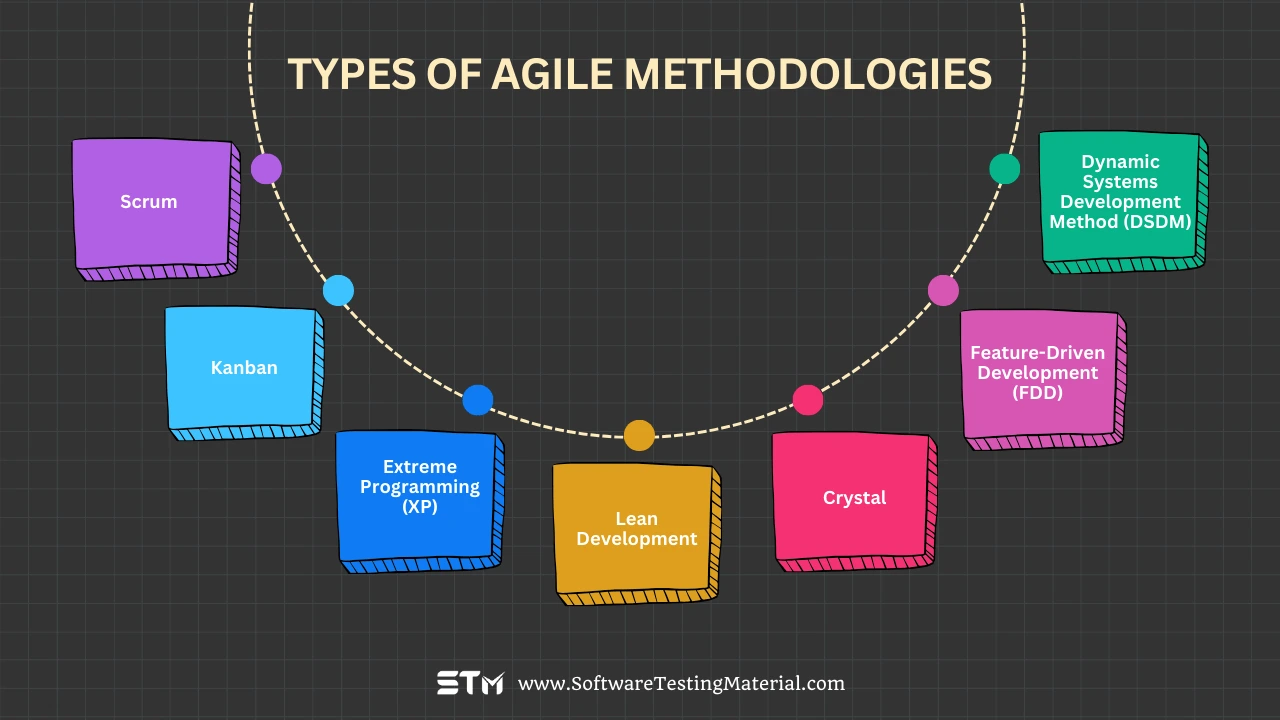
- Scrum: Scrum is a popular Agile framework that divides work into fixed-length iterations called sprints, typically lasting 2-4 weeks. It emphasizes roles such as the Scrum Master and Product Owner, as well as regular ceremonies like daily stand-ups, sprint planning, reviews, and retrospectives.
- Kanban: Kanban focuses on visualizing work and improving workflow efficiency. By using a Kanban board, teams track tasks as they move through different stages, ensuring work-in-progress limits are maintained to prevent bottlenecks.
- Extreme Programming (XP): XP emphasizes technical excellence through practices like pair programming, test-driven development, and continuous integration. It focuses on delivering high-quality software while fostering close collaboration with customers.
- Lean Development: Inspired by Lean manufacturing principles, Lean Development focuses on minimizing waste, optimizing value delivery, and improving efficiency across the development process.
- Feature-Driven Development (FDD): FDD is a model-driven and incremental process designed to deliver features in shorter cycles. It involves defining, designing, and building specific features based on business needs.
- Crystal: The Crystal methodology is a family of Agile approaches that prioritize adaptability based on project size, team size, and criticality. It emphasizes communication, simplicity, and frequent delivery.
- Dynamic Systems Development Method (DSDM): DSDM is an Agile framework that focuses on delivering projects on time and within budget while maintaining quality. It emphasizes active user involvement, iterative development, and a strong foundation of control. DSDM outlines key principles such as delivering continuously, ensuring fitness for business purpose, and focusing on collaboration. It is particularly well-suited for projects where requirements are likely to evolve over time, providing a structured yet flexible approach to software development.
Each of these methodologies offers unique advantages and can be chosen based on the specific requirements, goals, and constraints of a software development project.
14. When do we use Agile Scrum Methodology?
- Unclear End Goals: When the client is not so clear on requirements.
- Need for Faster Results: When the client expects quick releases.
- Evolving Requirements: When the client doesn’t give all the requirements at a time. Only provides requirements incrementally.
- Highly Complex Projects: Projects that involve a high level of complexity, requiring iterative development and continuous problem-solving.
- Dynamic Environments: Where stakeholders demand regular updates and wish to engage in the development process to provide ongoing feedback.
- Frequent Changes or Updates: Projects where requirements are expected to change frequently or where the product vision is likely to evolve over time.
- Cross-Functional Teams:Projects with cross-disciplinary teams, promoting collaboration, communication, and shared accountability.
- Customer-Centric Development: Where organizations focus on delivering value to customers by incorporating customers feedback into each iteration.
15. What is Epic in Agile?
Epic: An Epic is a large story or a big idea that needs to be broken down into smaller stories. It describes a goal or feature that will take significant time to complete. For example, “Build a mobile app” could be an Epic.
16. What is User Story in Agile?
User Stories: A User Story is a smaller, manageable piece of work that comes from an Epic. It explains what a user wants to achieve and why in simple terms. A User Story often follows a format like, “As a [user], I want to [do something] so that I can [achieve a goal].” For instance, a User Story under the “Build a mobile app” Epic could be, “As a user, I want to log in securely so that I can access my account.”
17. What is Task in Agile?
Tasks: Tasks are the specific actions or steps needed to complete a User Story. They are the smallest unit of work and focus on what team members need to do. For example, a task for the secure login User Story could be, “Implement password encryption.”
18. What is a Sprint?
In Scrum, the project is divided into Sprints. Each Sprint has a specified timeline (2 weeks to 1 month). This timeline will be agreed by a Scrum Team during the Sprint Planning Meeting. Here, User Stories are split into different modules. The end result of every Sprint should be a potentially shippable product.
19. What is the Zero sprint in Agile?
Zero Sprint in Agile refers to the initial phase of work done before the first official sprint begins. It is also called a preparation or setup sprint. During this stage, the team focuses on activities like setting up the necessary tools, gathering requirements, creating the backlog, and planning the project. The goal of Zero Sprint is to ensure that everything is ready for the team to start delivering work effectively in the upcoming sprints. It helps establish a strong foundation for the project, so the team can hit the ground running when the actual sprints begin.
20. What is Spike in Agile?
A Spike, often called a “spike solution,” in Agile is a term used to describe a type of task that is meant to learn, research, or explore something. When the team is unsure how to solve a problem or needs to figure out more details about a feature, they use a Spike. It’s like a small experiment or investigation to gather information and reduce uncertainty. For example, a Spike can help the team decide the best approach, understand new technology, or clarify requirements before fully starting the work. Spikes are often time-boxed, meaning the team spends a fixed amount of time on them to stay focused.
21. What are Product Backlog and Sprint Backlog?
Product Backlog: Product Backlog is a repository where the list of Product Backlog Items stored and maintained by the Product Owner. The list of Product Backlog Items are prioritized by the Product Owner as high and low and also could re-prioritize the product backlog constantly.
Sprint Backlog: Group of user stories which scrum development team agreed to do during the current sprint (Committed Product Backlog items). It is a subset of the product backlog.
22. What is the difference between Burn-up and Burn-down chart?
Burndown Charts provide proof that the project is on track or not. Both the burn-up and burn-down charts are graphs used to track the progress of a project.
Burnup charts represent how much work has been completed in a project whereas Burn-down chart represents the remaining work left in a project.
Check below video to see “Agile Testing Interview Questions”
Please be patient. The video will load in some time.
If you liked this video, then please subscribe to our YouTube Channel for more video tutorials.
23. What are the types of burn-down charts?
There are four popularly used burn down charts in Agile.
i. Product burndown chart
ii. Sprint burndown chart
iii. Release burndown chart
iv. Defect burndown chart
24. What is Product Burndown Chart?
A graph which shows how many Product Backlog Items (User Stories) implemented/not implemented.
25. What is Sprint Burndown Chart?
A graph which shows how many Sprints implemented/not implemented by the Scrum Team.
26. What is Release Burndown Chart?
A graph which shows List of releases still pending, which Scrum Team have planned.
27. What is Defect Burndown Chart?
A graph which shows how many defects identified and fixed.
28. What is a Daily Stand-up Meeting?
Daily Stand-up Meeting is a daily routine meeting. It brings everyone up to date on the information and helps the team to stay organized.
Each team member reports to the peers the following:
- What did you complete yesterday?
- Any impediments in your way?
- What do you commit to today?
- When do you think you will be done with that?
In general, it’s not a recorded meeting. Reporting will be between peers not to Scrum Master or Product Owner. It is normally timeboxed to a maximum of 15 minutes. It is aka 15 Minute Stand-up Meeting.
Here is a screenshot from Slack Application on daily standup meeting.
29. Why daily stand-up meetings are important in Agile?
Daily stand-up meetings are a cornerstone of Agile methodology often referred to as daily scrum. They facilitate open and efficient communication among team members. By gathering everyone together at the start of the day, these meetings ensure that all team members remain aligned with the project’s goals and current status. They provide an opportunity for individuals to quickly share updates on their progress, discuss any obstacles they are facing, and plan their tasks for the day. This transparency helps to preemptively address potential issues and ensures that team members stay connected and cooperative, ultimately enhancing productivity and coherence in the workflow.
30. What is a Sprint Planning Meeting?
The first step of Scrum is the Sprint Planning Meeting where the entire Scrum Team attends. Here the Product Owner selects the Product Backlog Items (User Stories) from the Product Backlog.
Most important User Stories at the top of the list and least important User Stories at the bottom. Scrum Development Team decides and provides effort estimation.
Agile Testing Interview Questions for Experienced
31. What is a Sprint Review Meeting?
In the Sprint Review Meeting, Scrum Development Team presents a demonstration of a potentially shippable product. Product Owner declares which items are completed and not completed. Product Owner adds the additional items to the product backlog based on the stakeholder’s feedback.
32. What is a Sprint Retrospective Meeting?
Scrum Team meets again after the Sprint Review Meeting and documents the lessons learned in the earlier sprint such as “What went well”, “What could be improved”. It helps the Scrum Team to avoid the mistakes in the next Sprints.
33. What is a Task Board?
A Taskboard in Agile is a dashboard used to track and manage the progress of tasks within a project
In general, the columns(stages) used in a task board are as follows
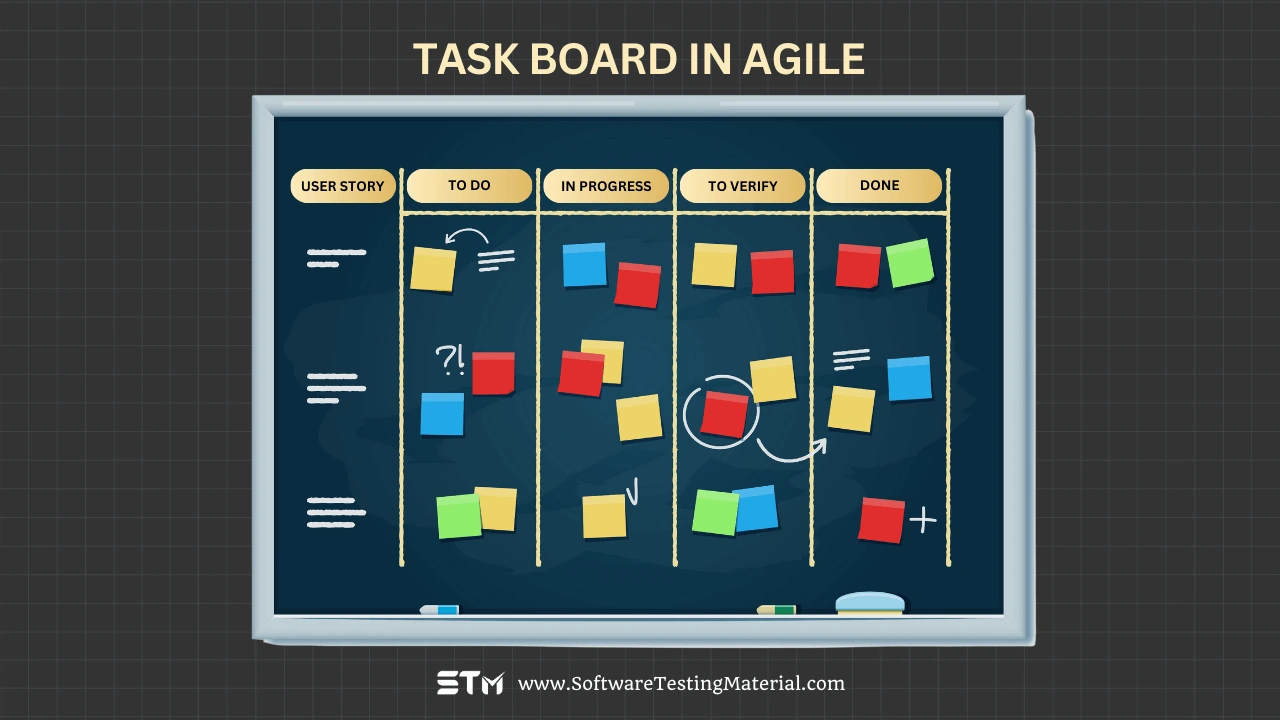
- User Story: Tasks, known as user stories (Actual Business Requirement), are written on cards and moved across these columns as they advance through the workflow.
- To Do: All the tasks of current sprint that need to be started
- In Progress: Any task being worked on
- To Verify: Tasks tasks that are complete but need verification
- Done: Tasks which are completed
This simple and effective tool helps teams stay organized and focused.
34. What is DevOps?
The term DevOps was formed by combining “Development” and “Operations”. DevOps is an operational philosophy that promotes collaboration between development and operation teams. DevOps focuses on bringing development and operations team together in order to build, test, and release software faster and more reliably.
35. What is the difference between Agile and DevOps?
| Agile | Devops |
|---|---|
| Agile focuses on collaboration, small releases and customer feedback. | DevOps focuses on bringing development and operations team together. |
| Agile is developed for faster productions and immediate delivery. | DevOps is developed for faster productions and immediate delivery. |
| Agile usually breaks big modules into smaller one to achieve the goal. | DevOps combines tools and cultural practices to provide faster delivery. |
| Agile focuses constant change. It addresses the gap between customer need, development and testing teams. | DevOps focuses on constant testing and delivery. It address the gap between development, testing and operations. |
| Each team member should be able to what’s required for the progress of the project. All the team members should have equal skill set in Agile. | Development teams and operational teams are different in DevOps. Different teams have different skill set in DevOps. |
| Agile teams are usually smaller in size. Agile teams move faster with fewer people with minimum complexities. | DevOps believes that bigger is better. Many teams work together in DevOps. |
| It believes in constant feedback and daily team meetings to make the teams more productive and efficient. | It follows modern documentation approach to communicate with all the team members rather than conducting daily meetings. |
| Agile takes an iterative approach to Software Development. | DevOps targets end-to-end business solution. |
| Agile doesn’t believe in automation. | Automation is at the core of DevOps. Automate almost everything. |
| Its goal is to address the gap between customer needs and development & test teams. | Its goal is to address the gap between Dev (development and testing) and Ops (Operations). |
| Some of the tools used widely are JIRA, Kanboard, Bugzilla. | Some of the tools used widely are Puppet, Ansible, Chef, AWS, TeamCity OpenStack. |
| Agility in development only. | Agility in both development and operations. |
| Involves in Agile Scrum, Agile Kanban etc., | Involves in Continuous Integration (CI), Continuous Development (CD), Continuous Testing (CT), etc., |
| Priority goes to timeliness. | Priority goes to both timeliness and quality. |
| It helps in managing complex projects. | It helps in managing end to end engineering processes. |
| It allows constant changes. | It allows constant testing and delivery. |
| The focus is on functional & non-functional readiness. | The focus is on operational & business readiness. |
| It supports shift left principles. | Its supports both shift left and shift right principles. |
| The target areas of Agile are quick delivery and end to end business solution. | The target area of DevOps is Software development. |
| Agile teams are cross functional. | DevOps has separate development and operational teams and cannot be cross-functional. |
| Easy communication due to daily scrum meetings. | Communication is complex compared to Agile. |
36. What is the difference between Agile and Waterfall model (Agile vs Traditional Project Management)?
| Agile | Waterfall |
|---|---|
| Testing is done in parallel with the development activity which means that as the development progresses so does the testing | Testing is generally done at the end of the development |
| Agile is an iterative and incremental approach | It is a sequential design process where design, development, testing and other phases happens one after another in a sequential way |
| Testing is performed concurrently with software development | “Testing” phase comes after the “Build” phase |
| Requirements are collected even late in development. | Requirements are collected before starting the development in Waterfall model. |
| Agile teams participate in changing requirements. | Waterfall teams were not involved in changing requirements. |
| Agile methodology is known for its flexibility | Waterfall is a structured software development methodology, and often times can be quite rigid |
| It believes in constant feedback and accepts changes to requirements | Customer feedback is usually not collected until the very end of the project, and changes are discouraged |
| Agile focuses on collaboration, small releases and customer feedback | Team coordination is very limited |
| Agile divides the project into sprints. | The waterfall divides the project into stages. |
| Self-motivated and self-organizing teams drive the project | Project manager drives the project as a central controlling authority |
| It allows us to complete multiple small active projects. | It allows us to complete a single project. |
| Testing phase starts in parallel with development in Agile. | Testing phase starts only after the development in Waterfall model. |
37. What is the difference between Incremental and Iterative development in Agile?
Incremental and Iterative development are two core concepts within Agile methodologies, and they address how work is approached and completed.
- Incremental Development focuses on breaking down the workflow into smaller, manageable increments that deliver fully functional pieces of the final product. Each increment builds on the previous one, providing value to the customer at regular intervals. The goal is to create usable and shippable features in every cycle, ensuring ongoing progress and early delivery of critical components.
- Iterative Development, on the other hand, emphasizes refining and improving the product over successive iterations. Instead of delivering a fully functional part of the product in each cycle, the team works on the entire product continuously, incorporating feedback and adjustments to improve functionality, design, and efficiency until reaching the desired outcome.
The key difference lies in the approach—incremental development delivers in parts, while iterative development refines through progression and repetition. Agile teams often use a combination of both, allowing for frequent delivery of value and continuous improvement.
38. What is the difference between Scrum and Agile?
| Aspect | Scrum | Agile |
|---|---|---|
| Definition | Scrum is a framework that follows Agile principles, focusing on iterative sprints. | Agile is a methodology centered around iterative development with a focus on flexibility and customer collaboration. |
| Structure | Uses fixed-length sprints (typically 2-4 weeks) with specific deliverables. | Iterations are flexible and can vary in length depending on the project or team needs. |
| Roles | Defines specific roles such as Scrum Master, Product Owner, and Development Team. | Roles are not strictly defined; they can be adapted based on project requirements. |
| Process | Follows a structured approach with planning meetings, sprint reviews, and retrospectives. | Offers a flexible approach without enforcing a specific structure or ceremonies. |
| Focus | Primarily focuses on delivering a functional product increment during each sprint. | Focuses on the overall process of continuous delivery and improvement. |
| Documentation | Minimal documentation, prioritizing working software over extensive reports. | Balances documentation, but still prioritizes working software as the main goal. |
| Use Case | Best suited for smaller teams working on specific deliverables. | Can be adapted for various team sizes and diverse types of projects. |
39. How long were your sprints?
An ideal sprint length is anywhere between 1 week to 4 weeks. 2 week-long Sprints are most common for IT and software product development.
40. What are the disadvantages of the agile model?
Some of the disadvantages of using the agile model are as follows:
- It is not easy to predict. When you encounter a large project, it becomes more problematic to estimate the amount of effort needed in the project
- In case the guidelines given by the customers is not understood properly, then the final outcome of the project will not meet the customer requirements. It leads to the customer dissatisfaction
- It is not possible to properly focus on the design and documentation of a project sometimes
- Basically, High-level decision making is in the hands of the higher authorities. The team members with little or no experience are not involved in decision-making, thus they don’t get a chance to advance their knowledge
41. What is an impediment in Scrum?
Impediments are the obstacles faced by the scrum team. Any obstacle that keeps the team from getting work done and that slows velocity is known as Impediment. Scrum Master is responsible for removing impediments.
In Agile Scrum interviews, you may be asked to give some examples of impediments.
42. What are the examples of impediments?
Impediments come in many forms. Some of the impediments are mentioned below
- Resource unavailability (Sick team member)
- Lack of management support
- Business issues
- Lack of skill
- Technical, operational issues
- Even external issues such as weather
43. What kind of impediments should a scrum master remove?
A Scrum Master plays a critical role in facilitating the Scrum process and ensuring smooth collaboration among team members. One of their primary responsibilities is to remove impediments that hinder the team’s progress. These impediments can include:
- Organizational roadblocks: Issues such as unclear company policies, inefficient processes, or lack of resources that affect the team’s workflow.
- Technical obstacles: Problems with tools, systems, or technologies required for development, such as access issues or software bugs.
- Team-related conflicts: Miscommunication, interpersonal conflicts, or lack of alignment within the team, which can disrupt productivity.
- Dependency issues: Delays caused by dependencies on other teams or external vendors, hindering the progress of tasks.
- External distractions: Unnecessary meetings, ad-hoc requests, or changes in priorities that pull the team away from their focus.
- Knowledge gaps: Lack of necessary training, expertise, or understanding of Agile practices that slow down the team’s efficiency.
By addressing these impediments proactively, the Scrum Master ensures the team can focus on delivering high-value work seamlessly.
44. What is Velocity?
In Agile Methodology, Velocity is a key metric that is calculated at the end of each sprint by addition of all effort estimates associated with user stories completed in a sprint. It predicts how much work an agile software development team can successfully complete within a sprint and how much time will it need to finish a project. Points from partially-completed or incomplete user stories should not be counted in calculating velocity.
45. How is the velocity of the sprint measured?
It is a simple calculation that measures the quantity of work completed within a given period of time. There are several ways to measure units of work, such as story points, user stories, and engineer hours.
To accurately measure velocity of the sprint, especially when team capacity varies, consider these two approaches:
- Method One: Calculate velocity by multiplying the completed story points by the team’s capacity. Here, capacity is expressed as a percentage of a standard 40-hour workweek.
- Method Two: Determine velocity by dividing the completed story points by the team’s capacity, with capacity measured in person-hours. This approach is ideal for precise person-hour calculations.
46. What is the story point in Agile?
A story point in Agile is a unit of measure used to estimate the effort required to complete a task in a project. It is not tied to a specific time measurement, like hours or days, but rather it accounts for factors such as the complexity of the task, any uncertainties, and how much work there is to do. Story points help teams to compare tasks and prioritize work, making it easier to plan sprints and allocate resources effectively. By focusing on effort rather than time, teams can remain flexible and adapt to changes more quickly.
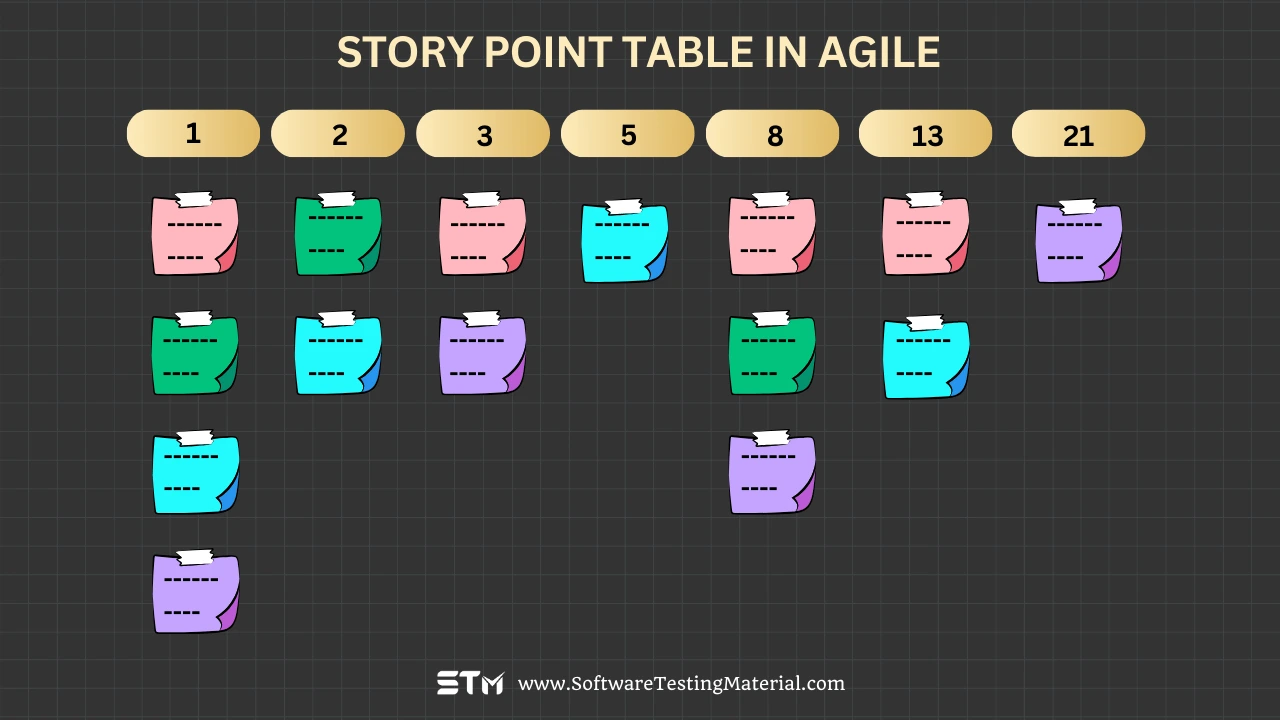
The most common scale used method for estimating story points is Fibonacci sequence ( 1,2,3,5,8,13,….100) although some teams use Powers of 2 (1,2,4,8……), linear scale (1,2,3,4….), and cloth size (XS, S ,M,L, XL).
47. What is Scrumban in Agile?
Scrumban(Scrum+Kanban) is a hybrid project management methodology that combines the structure and iterative focus of Scrum with the flexibility and flow-based principles of Kanban. It was designed to help teams transition from Scrum to Kanban or simply adopt a more adaptive approach to Agile practices. Scrumban emphasizes continuous improvement, work visualization through Kanban boards, and limiting work in progress (WIP) to ensure steady delivery. With its blend of practices, Scrumban allows teams to maintain the sprint organization of Scrum while benefiting from the pull-based system of Kanban, making it an ideal choice for dynamic environments or projects with unpredictable demands.
48. What is a Build-Breaker?
A build-breaker refers to an error or issue in a software development process that prevents the build—typically the automated compilation and integration of the codebase—from completing successfully. It can be caused by various factors, such as a syntax error, failing tests, missing dependencies, or integration conflicts. Build-breakers are critical to address promptly, as they can halt progress for the entire team and disrupt the workflow. Developers often use continuous integration tools and practices to identify and resolve build-breakers quickly, ensuring that the project remains on track and minimizing downtime.
49. What is an Agile Test Plan?
An Agile Test Plan is a document created in Agile software development that outlines the testing approach, scope, and activities for a particular project or sprint. Unlike traditional test plans, Agile Test Plans are more flexible and adaptable. They evolve throughout the project’s lifecycle to address changing requirements and priorities. This plan ensures that the software meets the desired quality standards and delivers value to the end-users.
50. What are the key components of an Agile Test Plan?
Key components of Agile Test Plan are as follows
1. Scope of Testing
Defines what will be tested in the project.
- Includes details about features, functionalities, and areas that require testing.
- Identifies parts of the application that are out of scope.
2. Testing Objectives
Specifies the goals of testing, such as finding defects early or ensuring a seamless user experience.
Focuses on delivering high-quality software aligned with customer requirements.
3. Test Strategy
Describes the approach to testing, including manual and automated testing.
Outlines how tests will be prioritized within Agile iterations.
- May involve techniques like exploratory testing or regression testing.
4. Roles and Responsibilities
Identifies team members responsible for testing.
- Details roles of Agile testers, developers, and other stakeholders.
Encourages collaboration between testers and developers in Agile teams.
5. Tools and Environments
Lists testing tools that will be used, such as automation frameworks or defect tracking tools.
Describes the test environment setup, such as staging or production-like environments.
6. Test Deliverables
Outlines the documents and reports produced during testing, like test cases, bug reports, or test metrics.
Includes any artifacts that demonstrate the testing progress.
7. Test Schedule
Provides a timeline for testing activities during the sprint.
Aligns testing with sprint goals and deadlines.
8. Risks and Mitigation Plan
Identifies potential risks, such as resource constraints or technical challenges.
Suggests approaches to minimize or address these risks.
9. Acceptance Criteria
Defines the conditions under which a feature or functionality is considered complete and ready for release.
Ensures alignment with user stories and business requirements.
By using an Agile Test Plan, teams can maintain focus on quality, adapt to changes quickly, and deliver value consistently within shorter development cycles.
51. What is Refactoring?
Refactoring means improving the structure and quality of the code without changing how it works. It is done to make the code cleaner, easier to read, and maintain. This helps in finding and fixing issues faster and makes the code more efficient and reusable.
52. What is a test stub in Agile?
A test stub in Agile is a lightweight, simplified module or component used during testing to emulate the behavior of a more complex or unavailable module. It acts as a temporary replacement for a dependent component, allowing testers to focus on the functionality of the module being tested without relying on the real, complete system. Top down integration testing often uses test stubs as they enable early testing even when certain parts of the system are not yet developed or integrated. This approach supports faster feedback and more efficient problem identification in the iterative Agile process.
53. What is a tracer bullet in Agile?
A tracer bullet in Agile is a programming technique used to implement a thin, functional slice of the system from end to end. It serves as an exploratory tool to demonstrate how different components of the system interact while delivering a basic working version of the desired functionality.
Tracer bullets provide immediate feedback on the feasibility of a solution, helping teams validate assumptions and fine-tune the design. Unlike prototypes, tracer bullets are part of the final system and evolve iteratively, aligning with Agile principles of incremental development. This approach ensures that the development remains on track by continuously testing the integration and flow of the system.
54. What is Application Binary Interface (ABI)?
An Application Binary Interface (ABI) defines the low-level interface between two binary program modules, typically between an operating system and user-level applications or between different parts of software.
Unlike an API (Application Programming Interface), which is concerned with the source code structure and syntax, an ABI focuses on the compiled code. It specifies fundamental aspects like function calling conventions, data type sizes, memory alignment, and system calls.
Consistency in the ABI ensures that programs compiled by different compilers or written in different languages can execute correctly when interacting on the same system.
ABIs are critical for software compatibility, especially in environments where programs must run across multiple hardware platforms or where pre-compiled libraries interact with applications.
55. What is a product roadmap?
A product roadmap is a high-level, strategic document that outlines the vision, direction, and progress of a product over time. It serves as a guide for aligning teams, stakeholders, and customers around the product’s goals and key milestones. Typically, a product roadmap includes planned features, enhancements, and timelines, providing a clear view of what is expected in the short-term and long-term development of the product. It helps prioritize efforts, ensures team focus, and communicates the value being delivered at various stages to all involved parties.
56. How does Agile testing handle non-functional requirements like performance and security?
Agile testing handles non-functional requirements like performance and security by integrating these aspects into every stage of development. Instead of testing them at the end, Agile teams continuously check these requirements throughout the project. For performance, testers use performance testing tools to measure how fast the application runs under different conditions. For security, developers and testers work together to identify risks and fix vulnerabilities early. By making performance and security part of the regular testing process, Agile ensures that the final product is both efficient and safe.
57. What is the significance of a Definition of Done (DoD) in Agile testing?
A Definition of Done (DoD) in Agile testing is important because it helps the team understand when a task or user story is truly finished. The DoD is a checklist of specific criteria that must be met before work can be considered complete. For example, this might include writing code, testing it, fixing bugs, and updating documentation. The DoD ensures that the team delivers high-quality work and nothing is rushed or incomplete. It also helps everyone stay aligned on what “done” means, reducing confusion and improving collaboration.
58. Can you explain the concept of ‘Test-Driven Development’ (TDD) in Agile?
Test-Driven Development (TDD) in Agile is a way of writing and testing code to ensure it works correctly from the start. The process begins by writing a simple test for a small part of the code, even before writing the actual code. This test is expected to fail because the code doesn’t exist yet. Next, the developer writes just enough code to pass the test. Once the test passes, the code is cleaned up or improved without changing how it works. This process is repeated for every small part of the application. TDD helps catch mistakes early, keeps the code simple, and ensures that all parts of the software are tested as they are created.
59. How do Agile teams manage technical debt during iterative development?
Agile teams manage technical debt by addressing it regularly in their development process. They keep track of areas in the code that might need improvement and plan specific times to work on them. For example, teams might set aside some time each sprint to fix parts of the code that are messy or outdated. They also avoid adding more technical debt by following good coding practices, reviewing code carefully, and writing automated tests. By dealing with technical debt little by little, Agile teams ensure that it doesn’t grow too big and affect the quality of the product in the future.
60. What is the role of exploratory testing in Agile, and how does it complement automated testing?
Exploratory testing plays a key role in Agile by helping testers find issues or unexpected behavior in the software that automated tests might miss. This type of testing is done manually, where testers explore the application without following a strict test script. Instead, they use their creativity and experience to look for bugs and understand how the software works in real use.
Exploratory testing complements automated testing by covering areas of the software that are hard to predict or automate. While automated testing ensures that the code works as expected in predefined scenarios, exploratory testing helps discover new issues and ensures the software feels intuitive and user-friendly. Together, these methods create a more complete testing strategy for Agile teams.
Conclusion
The Best Agile Testing Interview Questions help you prepare effectively for Agile interviews. These questions cover a mix of theoretical knowledge and practical applications, ensuring you are ready to handle different scenarios in the Agile environment. By practicing these Agile Interview questions and focusing on key Agile values like collaboration, adaptability, and delivering quality, you can build your confidence for interviews. Remember, consistency in preparation and a clear understanding of Agile practices will set you apart as a strong candidate. Good luck with your interview preparation!
Apart from Agile Testing Interview Questions, earlier I have posted a detailed post on “Agile Scrum Methodology”. If you haven’t gone through it, you can browse by clicking on the link.
Like this post? Don’t forget to share it!
Here are a few hand-picked articles for you to read next:
- Explain Test Automation Framework
- Test Automation Framework Interview Questions
- Selenium Interview Questions
- TestNG Interview Questions
- SQL Interview Questions
- Manual Testing Interview Questions
- Agile Interview Questions
- Why You Choose Software Testing As A Career
- General Interview Questions

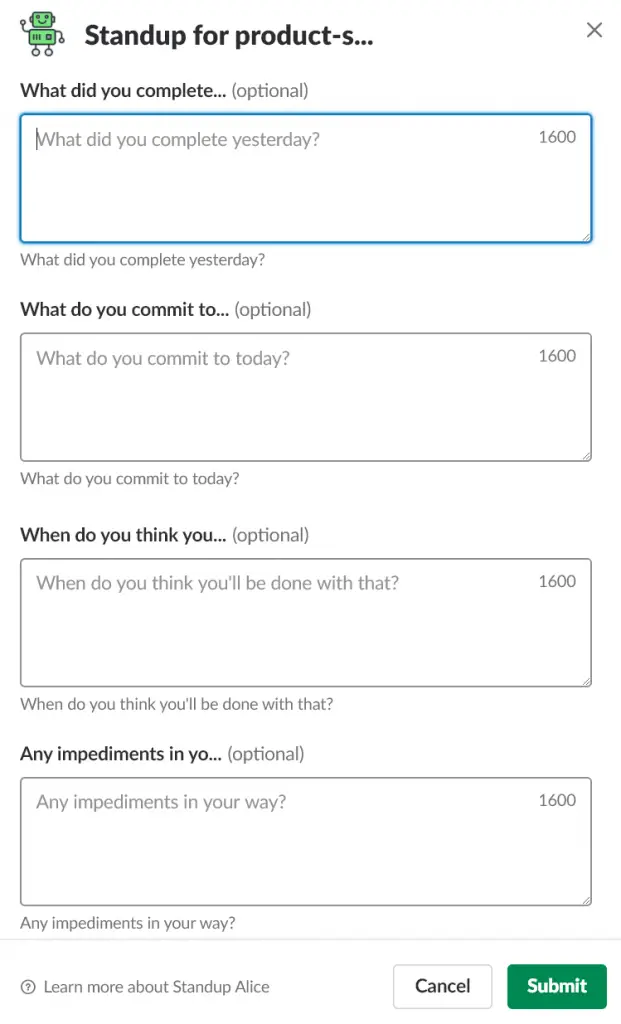
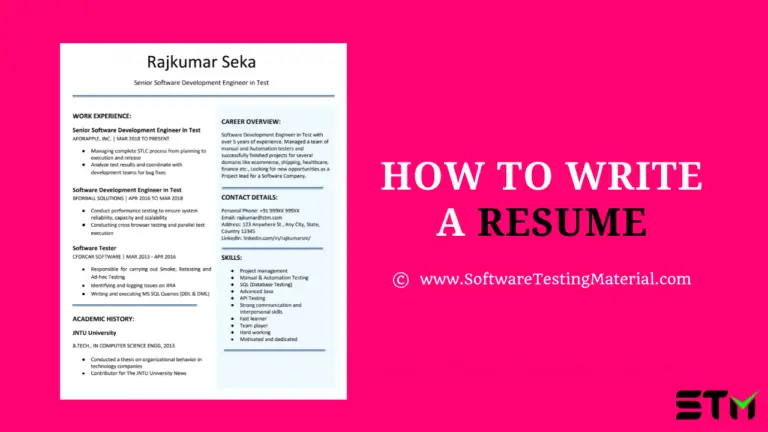

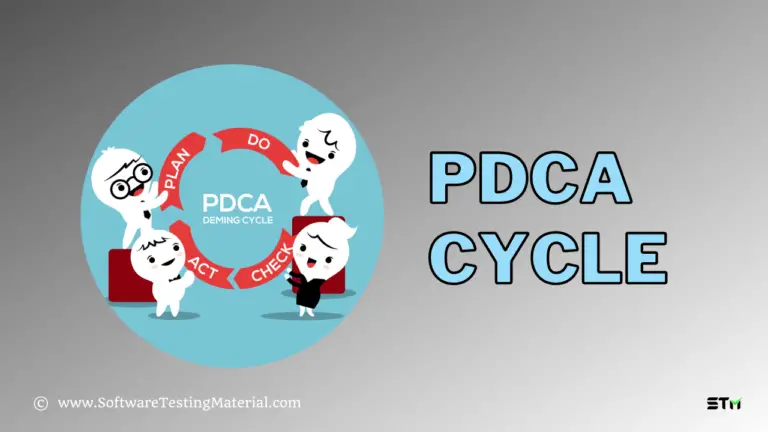
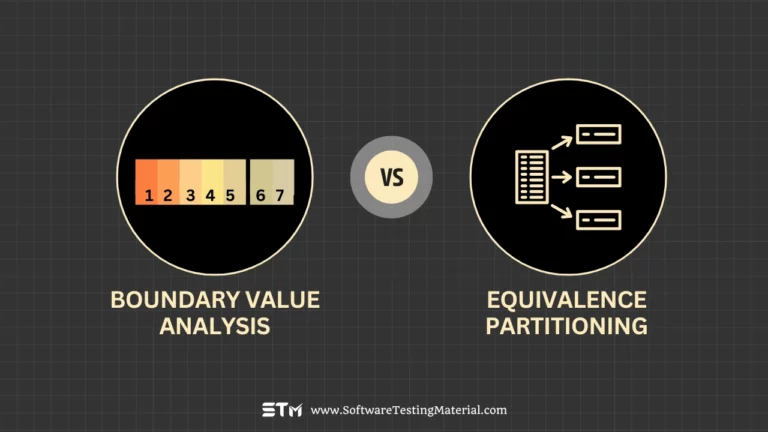
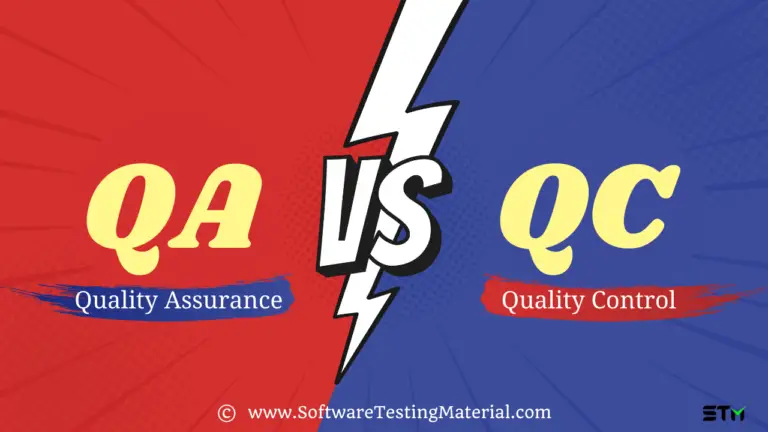
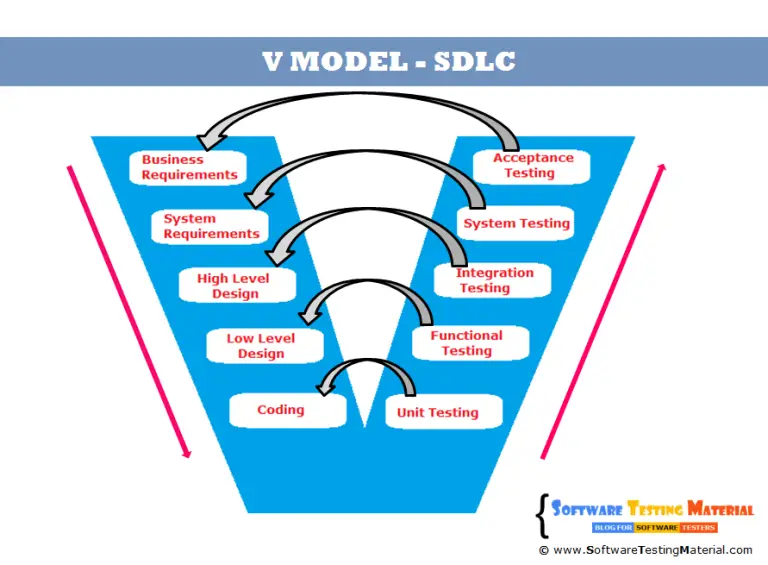
Hi rajkumar
How can we do automation in agile project?And how can we do automation when requirements are changing?Can please share your views on above questions. Thanks in advance.
Hi Jawahar,
Requirement changes are common in agile. Pls refer question 5 in the above list. It is advisable to start test automation only once the product is stable. With technically sound QA’s, you could start automating in parallel to development. We do develop test scripts by keeping need of regression testing in mind. Keep the test scripts small to avoid unnecessary maintenance. As a tester, you have to discuss with your Product Owner and Devs on what tests you need to automate. Also, you need to explain them the benefits of an automating particular script. Concentrate on the business critical functionalities, test cases which need to run multiple times (for regression testing)
Thumb rule, If a test is performed only once, it shouldn’t be automated.
Thank u so much for wonderful article keep sharing
Yes agree Rajkumar “It is advisable to start test automation only once the product is stable. ”
Thank You For Sharing Nice information
Hi Rajkumar,
Can u plz write an article about Jira tool
Sure Zameer khan. Will do it ASAP.
Hi Rajkumar,
My name is ALAM. Thank you very much because you help me a lot. It is really helpful.
I am glad it helped you.
Greetings Rajkumar,
Thank you for the time and efforts you put in to educate others. We sincerely appreciate your commitment to do all these.
One quick question i have is that in Agile there is something called story points, estimation and allocation of points to user stories. Can you please briefly explain how that works?
Once again thanks a lot!
Anil
Thanks Anil, Sure I will try to do it.
Hi Raj Kumar,
Did you get a chance to work on Anil Question (Brief Explanation on story points, estimation and allocation of points to user stories ) which posted on 22/11/2017.
Thanks,
Srikanth
Hi Srikanth, busy with other stuff. Will try to do it. Its there in my to-do list. Thanks for reminding me.
Hi Raj,
Nice article!
Its important to know how estimations are calculated…
A Gentle reminder on the query which was raised by other folks.
Did you get a chance to work on Anil Question (Brief Explanation on story points, estimation and allocation of points to user stories ) which posted on 22/11/2017
Thanks
Venkat
Thanks for the post